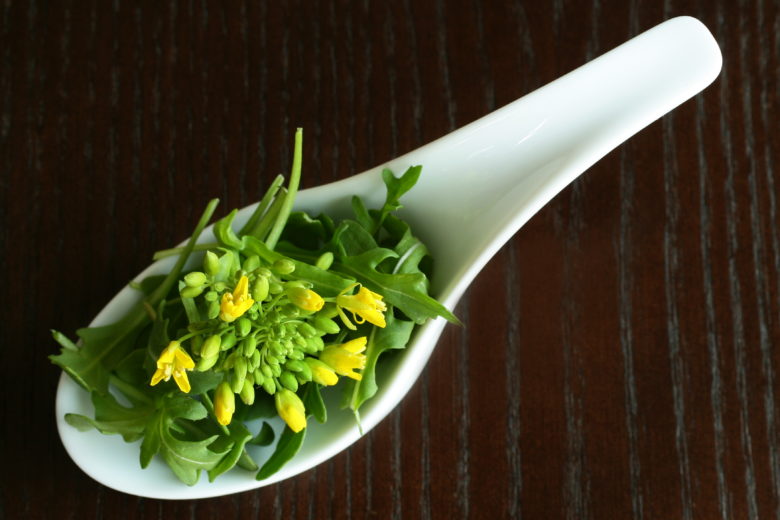
Fresh flowers can brighten a day, a room — and even a plate! While they may seem intrinsically ornamental, edible flowers can be budget-friendly, convenient and healthy additions to any home cook’s repertoire.
Flowers have been used in food for thousands of years, from ancient Mediterraneans who combined almond blossoms and honey to promote muscle strength to Greeks and Romans who often included calendula, a type of marigold, in salads. This tradition carried on into medieval times with marigold, in particular, being included in soups and stews. On the other side of the world, the Aztecs and Mayans used flowers to infuse water and to create powders and purées, used for eating and religious rituals.
Candied flowers and flower-encrusted pastries grew in popularity during the Victorian Era. Squash blossoms have been used among Hispanic cultures for generations, with traditional preparations describing a flower that is stuffed and baked, while American settlers used dandelions in wine and roses in jelly. The concept of flowers as food is as old as time, and the techniques and traditions for their use continue to evolve even today.
From herb to vegetable to fruit blooms, there are many ways these wonderful plant parts can be used. Edible flowers can be dried and ground or mashed fresh into a paste. In those forms, they can be used as a key ingredient for cooking or baking, can be pickled or candied, stuffed, or battered and fried. Some whole flowers or petals can be sautéed or grilled. Oils, vinegars and liqueurs can be infused with flowers. And if you want to keep it simple, flower buds or mature flowers can be tossed into any salad for a delightful addition.
Aside from adding to taste and presentation, a floral component can enhance the micronutrient composition of many culinary creations. As excellent sources of essential minerals such as potassium, phosphorous, calcium, magnesium, sodium, iron, manganese, copper, zinc and molybdenum, many edible flowers can help consumers meet daily requirements where they may otherwise fall short. Even more exciting is the abundance of antioxidants in flowers. A 2012 study from the Czech Republic analyzed the composition of 13 species of edible flowers, revealing that the flowers provided an average of 5.5 grams of antioxidants per kilogram of fresh mass.
However, not all flowers should be eaten. Some may not be palatable, while others are actually poisonous. Before you plate up the next pansy you see, here are a few tips:
- Make absolutely sure that the flowers are edible. If you are foraging for flowers (or any type of food), consult an expert and be sure they haven’t been treated with pesticides or herbicides — especially if they weren’t gardened to be food.
- Wash flowers thoroughly, removing the stamen and pistil before eating. To prevent wilting, wait to remove the petals from the rest of the flower until just before serving.
- Start slowly, trying one variety at a time and in moderation to prevent adverse reactions.
